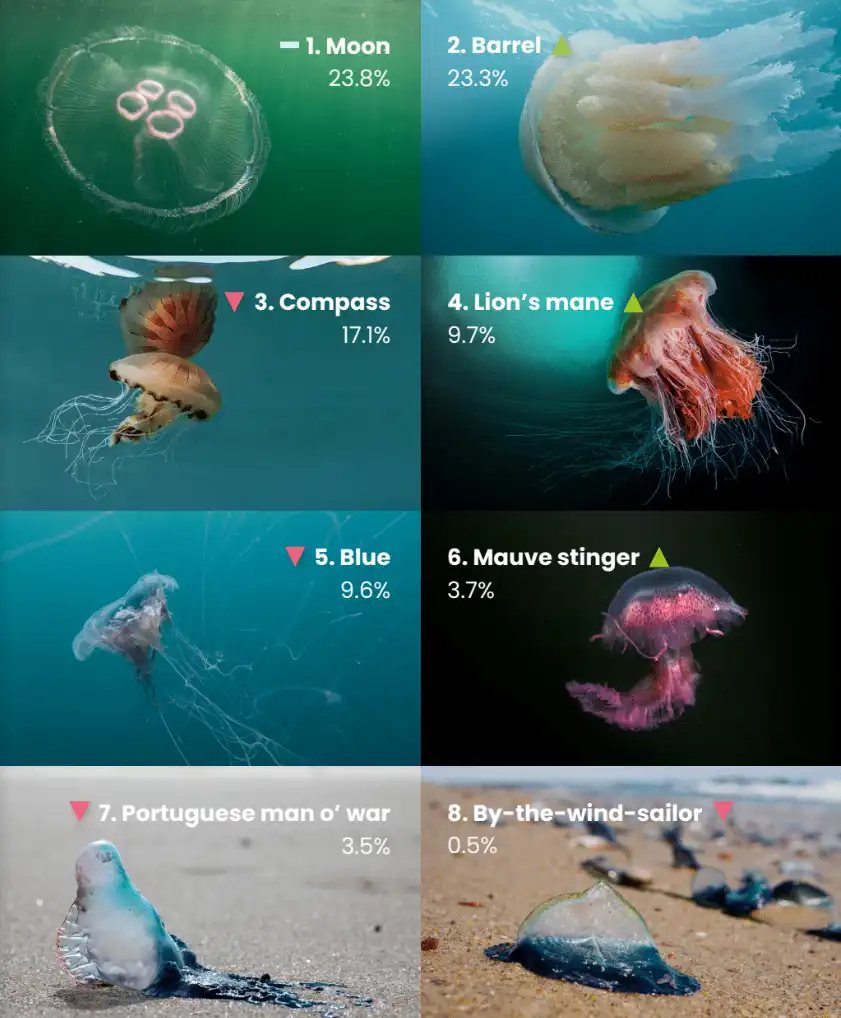
Jellyfish sightings across the UK and Ireland reveal changing patterns in the country’s coastal ecosystems, according to the Marine Conservation Society’s latest Wildlife Sightings Report.
Published to mark World Jellyfish Day, the report recorded 1,327 jellyfish sightings between October 2024 and September 2025 — a slight six per cent decrease on the previous year — but with notable changes in species distribution.
The moon jellyfish retained its top spot for a second year, accounting for almost a quarter of all reports, most frequently recorded in July and predominantly along the English coast. The huge barrel jellyfish surged from fifth to second place with a 230 per cent rise in sightings, especially in Scottish and Welsh waters.

In contrast, sightings of the Portuguese man o’ war — not actually a jellyfish but a collection of individual animals known as a siphonophore — dropped sharply by more than 80 per cent.
Once the second most common species reported, it fell to eighth place this year, representing less than four per cent of total sightings.
The Marine Conservation Society says the decline may be linked to fewer storms carrying them into UK waters from their typical tropical and subtropical habitats.
‘Volunteer reports show just how dynamic and ever-changing our coastal ecosystems truly are,’ said Anna Bunney, MCS Citizen Science Programme manager. ‘The surge in barrel jellyfish sightings is particularly interesting. These giant jellyfish, which can grow as big as a dustbin lid, have been sighted across the UK this year.
‘Whilst we need more records and data to help us understand these fluctuations, it may be linked to warmer sea temperatures and changing ocean currents. That’s why our public sightings are so vital – they help build a clearer picture of what’s happening in our seas and allow scientists to track changes in real time.’

The report also found that although overall sightings have declined, jellyfish blooms are becoming more common and larger in scale.
Nearly a fifth of all moon jellyfish sightings involved groups of 100 or more — the highest proportion recorded since 2016 — while mauve stingers were seen in record numbers, with half of all sightings involving groups of 20 or more.
Jellyfish play an important ecological role by moving carbon through marine food webs and acting as natural indicators of shifting ocean conditions. They also provide a vital food source for species such as the leatherback turtle.
This year, 12 turtles were reported in UK waters, nine of them leatherbacks, eight of which were alive and mostly seen off the southwest coast. A live loggerhead was also recorded in the Outer Hebrides. Most sightings occurred during the summer months, when turtles migrate north to feed on jellyfish.
The Marine Conservation Society launched its Wildlife Sightings Programme 22 years ago to help build a long-term picture of jellyfish and turtle populations around the UK and Ireland. This year’s report can be downloaded here.
Members of the public can report sightings at www.mcsuk.org/sightings.


